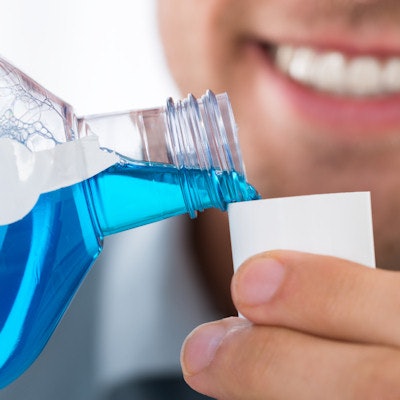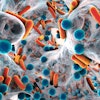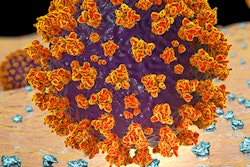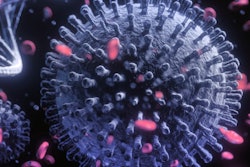
Over-the-counter mouthwashes may inactivate SARS-CoV-2, reducing the viral load in patients' mouths for a short period of time and potentially cutting the risk of transmission, according to a study published on July 29 in the Journal of Infectious Diseases.
Three mouthwashes that contained the active ingredients of either dequalinium chloride and benzalkonium chloride, polyvidone-iodine, or ethanol and essential oils significantly reduced the viral infectivity of SARS-CoV-2 to undetectable levels. Dental teams may consider having patients gargle with these formulas prior to treatment.
"Oral antisepsis could lower the number of infectious aerosolized virus particles and consequently the risk of transmission or infection," wrote the authors, led by Stephanie Pfänder, PhD, of the department of molecular and medical virology at Ruhr-Universität Bochum in Germany.
Path to transmission
Direct contact with respiratory aerosols or droplets from infected individuals produced during sneezing, coughing, or talking and subsequent contact with nasal, oral, or ocular mucous membranes is suspected as the main route of transmission of SARS-CoV-2. Therefore, high volumes of the virus in the oral cavity offer a strong source of potential infection.
Evidence has shown that mouth rinses can cut viral loads in the oral cavity. However, there is limited research into their effects on the novel coronavirus. One study showed that povidone-iodine (PVP-I) products, including a gargle and mouthwash and a throat spray, can kill 99.99% of the SARS-CoV-2 virus within 30 seconds. Another very small study showed that gargling with chlorhexidine mouthwash reduced the viral load of SARS-CoV-2 in patients' mouths.
The test
The researchers used cell culture experiments to evaluate the effectiveness of eight mouthwashes that are commercially available in Germany against three strains of SARS-CoV-2. Each mouthwash was mixed with virus particles and an interfering substance that aimed to mimic the effect of saliva in the mouth. The mixture was shaken for 30 seconds to simulate the effect of gargling. They then used Vero E6 cells, which are known to be receptive to the novel coronavirus, to determine the virus titer.
The virus suspensions were also treated with cell culture medium instead of the mouthwashes prior to adding them to the cell culture to assess the effectiveness of the mouth rinses.
Effective active ingredients
Dequonal, which contains the active compounds of dequalinium chloride and benzalkonium chloride; Iso-Betadine mouthwash 1%, which contains povidone-iodine; and Listerine Cool Mint, which contains ethanol and essential oils, reduced viral infectivity for the three strains of SARS-CoV-2 after 30 seconds, Pfänder and colleagues found.
The following other five mouthwashes, which contained active compounds such as hydrogen peroxide and polihexanide, did reduce the virus titer initially, but they were not nearly as effective:
- Cavex Oral Pre Rinse
- Chlorhexamed Forte
- Dynexidine Forte 0.2%
- Octenident mouthwash
- ProntOral mouthwash
Though mouthwashes may reduce the viral load in the oral cavity and throat in the short term, making them useful for dentists and other healthcare professionals, they cannot be used to treat COVID-19, the authors warned.
More studies
The researchers are examining the possibility of a clinical study on the efficacy of mouthwashes for SARS-CoV-2 viruses, including whether the effect can be detected in patients and how long it may reduce the viral load. Pfänder's group has been in contact with researchers in San Francisco who are working on similar studies.
"Our findings clearly advocate the evaluation of formulations in clinical context to systematically evaluate the decontamination and tissue health of the oral cavity in patients and healthcare workers to potentially prevent virus transmission," they wrote.




















